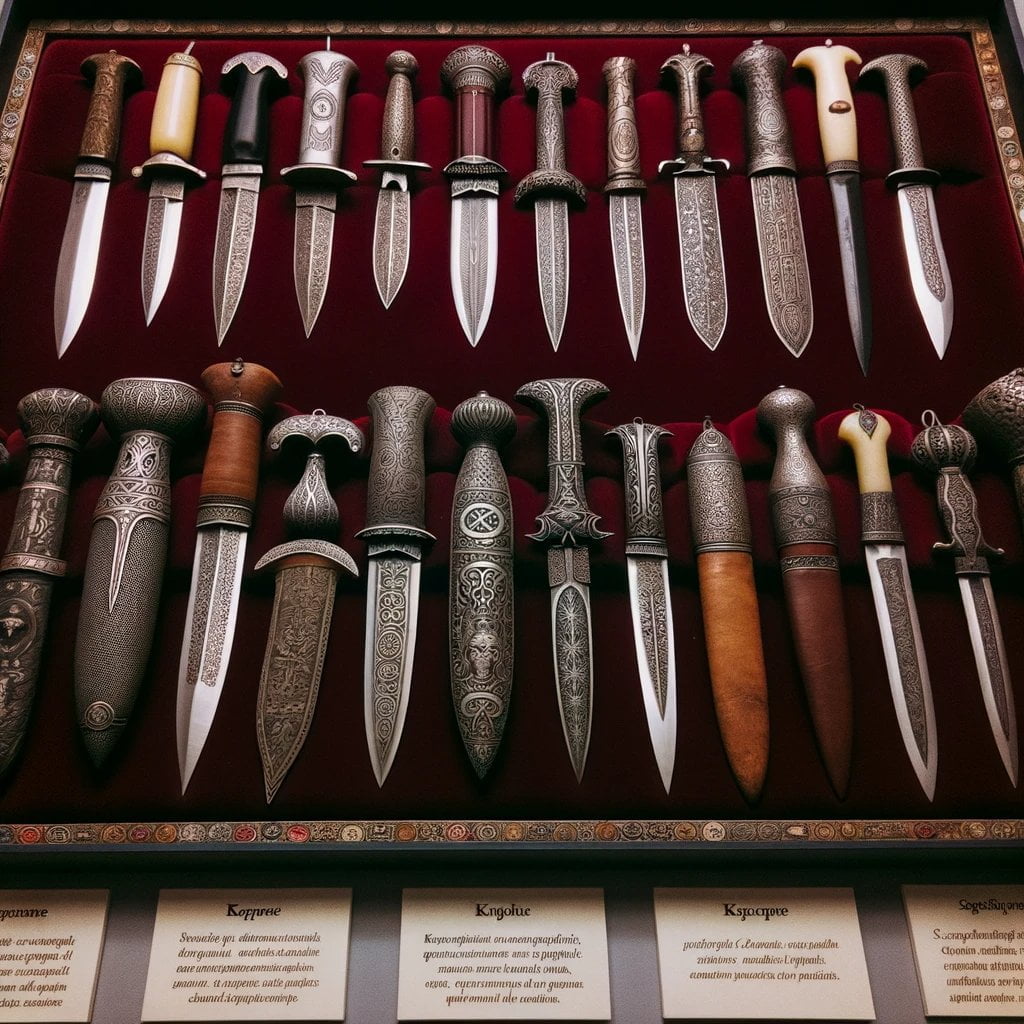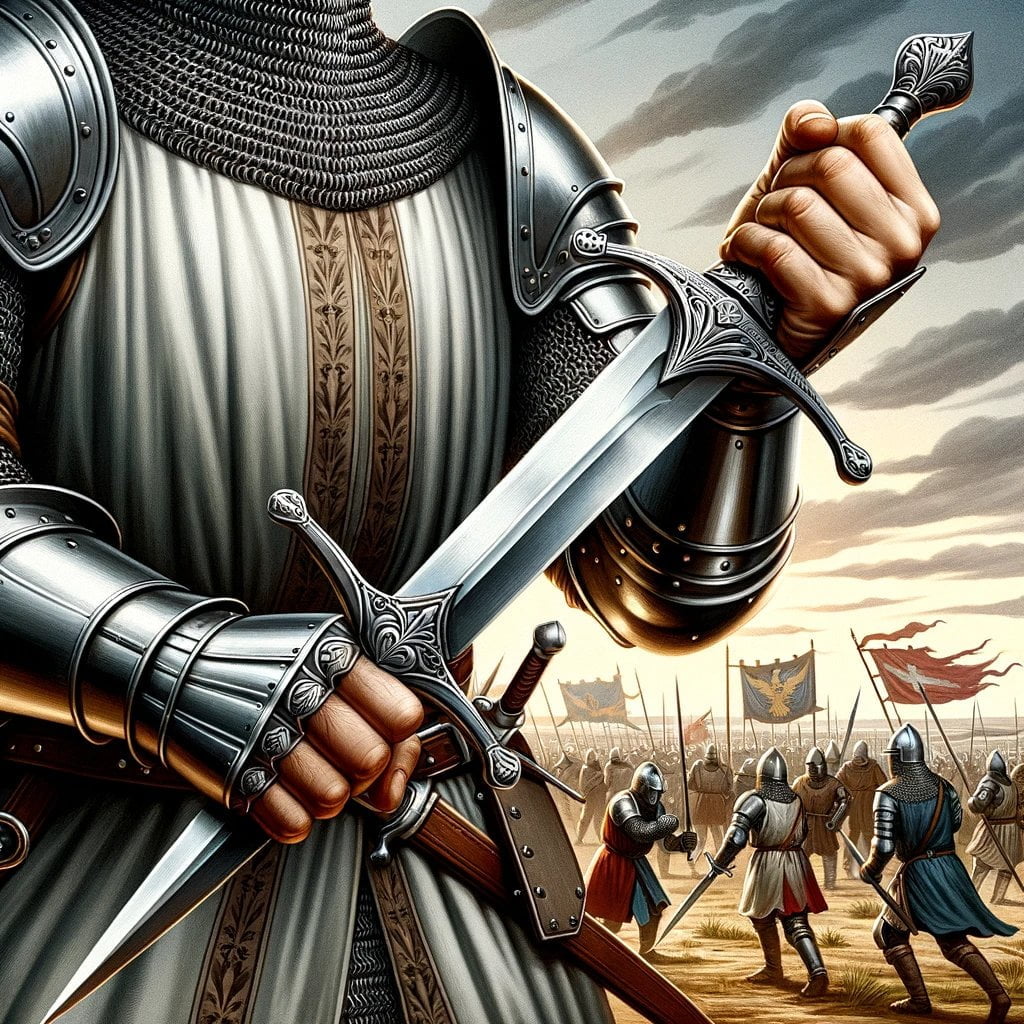With their sleek and deadly shapes, daggers have long fascinated humans. The mysteries of these centuries-old weapons await discovery. In this post, we explore daggers’ fascinating history and purpose. We explore the interesting stories behind these renowned weapons, from their practical uses as multipurpose tools to their cultural significance as symbols of power, status, and self-defense. Join us on this historical trip to discover daggers’ actual purpose.
What was the purpose of a dagger?
Few items in history are as vivid and intriguing as the dagger. Despite its small size, this weapon has shaped civilizations and societies worldwide. From practical uses to profound symbolism, a dagger’s purpose goes beyond killing.
A Weapon of Utility and Defense
For centuries, daggers have been handy instruments. Due to their tiny point, hunters used them to dress game precisely. Self-defense required these firearms, especially for those who sought a modest, concealable weapon. The small dagger was suited for close-quarters combat, protecting people in dangerous situations.
Assassinations and Warfare
Daggers have purposes beyond domestication. Daggers have been involved in political intrigue and military operations throughout history. Hidden dagger murders have been woven into many stories and historical events. A hidden blade has killed political leaders from ancient Rome to Renaissance Europe. The dagger was great for discretely killing enemies due to its secrecy and speed.
On the battlefield, daggers were important in close combat. When swords and spears were impractical, soldiers used these weapons as backups. The dagger was tiny and agile, allowing quick blows in chaotic fights.
Cultural Significance and Symbolism
Aside from its practical purposes, the dagger has become a symbol of many cultures. In rites and ceremonies, adorned daggers symbolize strength and authority. Daggers are also used for self-defense in various civilizations. They symbolize boldness and strength, standing up to injustice and protecting one’s interests.
The dagger’s design is typically symbolic. The blade’s sharpness represents precision and focus, while the hilt’s elaborate patterns reflect cultural aesthetics.
Relevance in Modern Times
Modern weapons have made the dagger less important on the battlefield, although its use remains in some areas. Close-quarters combat and self-defense daggers are common among military and law enforcement professionals. Due to the dagger’s versatility and historical significance, martial artists train in its skills.
However, municipal laws may govern dagger use and possession. Compliance and safety need familiarity with these constraints.
Sharpening Techniques and Caution
Sharpening a dagger is essential if you own one. Various ways and technologies can keep the dagger sharp, ensuring its usefulness when needed. However, sharp objects must be handled carefully and sharpened properly. Dagger sharpening should be done safely to avoid injuries.
To complete our discussion of daggers, we can understand their importance throughout history. Daggers are fascinating because of their weaponry, cultural symbolism, and present relevance. From hunting to self-defense, from political intrigue to the battlefield, the blade has shaped civilization. Daggers, whether appreciated for their workmanship or feared for their lethality, will always be remembered.
Did you know that medieval daggers hold a fascinating history? These weapons were not only used for close combat but also served as a symbol of prestige and power. If you’re a fan of medieval weaponry, you’ll definitely want to check out some intriguing medieval dagger facts. Click here to uncover the secrets behind these deadly yet mesmerizing blades: medieval dagger facts.
Dagger Techniques and Their Importance in Combat
Throughout history, daggers have been vital to fighting. These multipurpose secondary weapons were utilized in ancient Greece and Rome for battle and daily life. Discover the interesting world of dagger skills and their fighting applications in this article.
Dagger Tactics in Ancient Warfare
Ancient warriors knew daggers were effective in close combat. The ancient Greeks used dagger tactics to attack vulnerable armor vulnerabilities. They used precision assaults that could pierce weaker armor. Warriors used grabbing, stabbing, and slicing to fight.
Dagger Fighting Techniques Evolved
As armor became less popular, dagger fighting styles emphasized conventional grips. This increased combat maneuverability and versatility. They were confident in close-quarters battles since dagger combat masters knew attacking and defense skills.
The Roman Pugio System
The Pugio system advanced dagger techniques in ancient Rome. Roman troops fought with Pugio daggers. This technique combined offensive and defensive maneuvers to help soldiers engage enemies close-range. Roman troops relied on the Pugio for self-defense.
Daggers Beyond Warfare
Daggers were used in warfare, culture, and ceremonies. Daggers have always symbolized strength, rank, and self-defense in rituals. These elaborate daggers symbolized authority and were often embellished with ethnic emblems.
The Importance of Dagger Techniques
Effective battle requires dagger skills. Precision gripping, stabbing, and slicing can decide close-quarters battles. Dagger fighting knowledge lets warriors exploit weaknesses and kill with precision.
Conclusion
Warriors have used daggers for centuries as adaptable and effective weapons. These weapons were crucial to the military and culture from ancient Greece to Rome. Warriors got an advantage and could fight opponents by mastering dagger methods. Daggers have shaped human history, whether used in battle or ritual.
Table: The Evolution of Dagger Techniques
| Ancient Greece | Ancient Rome | Medieval Europe |
|---|---|---|
| Exploiting weaknesses in armor through precise attacks | Incorporation of the Roman Pugio system | Focus on thrusting and slashing techniques |
| Versatile backup weapon for warriors | High importance in Roman military strategy | Symbol of authority and power |
| Emphasis on gripping, stabbing, and slashing techniques | Mix of offensive and defensive moves | Utilized by knights and nobility |
Evolution of Daggers and Their Impact on Warfare and Self-Defense
For centuries, daggers have been essential to battle and self-defense. These adaptable weapons have changed with battle skills and society. Let’s examine dagger evolution and its effects on warfare and self-defense.
The Ancient Origins of Daggers
Ancient daggers have a rich history. They were created because warriors needed a short stabbing weapon to use when heavier weapons were impractical. Simple yet deadly wood and bone daggers were thought to have been the first.
Influence and Cultural Significance
In addition to being weapons, daggers were symbolic. Eastern daggers were shaped like cow horns, giving them a distinctive look. Daggers symbolized power, status, and self-defense because of their ties with historical weapon collections and tragedies.
Versatile Utility in Battlefields
Daggers were used as backup weapons when the main weapon was too heavy. They were lethal in close-quarters combat, where speed and agility were important. In ancient Greece, dagger tactics exploited armor flaws, demonstrating their battlefield utility.
Transition to Medieval Times
As combat shifted towards armor and cavalry during the Middle Ages, daggers evolved to focus more on self-defense. Medieval long daggers, worn suspended by a ring from the girdle, became a staple of knights and warriors. These daggers were not only formidable weapons but also symbols of a knight’s status and skill in combat.
Advances in Material and Design
Over time, advancements in metallurgy transformed the daggers’ functionality and durability. Bronze daggers with integrated metal hilts emerged around 1400 BC, and the use of iron for weapons followed around 1500 BC. These innovations allowed for stronger and more versatile daggers, enabling warriors to face the challenges of evolving battlefields.
Varied Types and Techniques
Different types and designs of daggers evolved to meet combat needs and personal preferences. Single-handed parrying daggers with ornate hilts were famous for their defensive powers and aesthetics.
Dagger fighting tactics improved over time. Mastering grips and attacks to maximize weapon efficiency became vital for fighting. Roman troops devised the Pugio method, which combined offensive and defensive maneuvers to demonstrate dagger strategy in battle.
The Enduring Role of Daggers
Daggers have remained relevant in various cultures throughout history, playing a vital role in close-proximity combat and self-defense. Their compact size and versatility have made them indispensable tools for warriors, soldiers, and civilians alike.
Pros:
- Highly versatile and convenient in close-quarters combat
- Symbolic and cultural significance
- Quick and lethal weapon of last resort
Cons:
- Limited range and effectiveness against armored opponents
- Requires close proximity to the target, posing potential risks
Finally, the history of daggers and their use in battle and self-defense is intriguing. Daggers have evolved from simple wooden and bone implements to deadly weapons. They have evolved from fighting to self-defense and prestige symbols, leaving an unmistakable stamp on history.
FAQ
Q: What is the historical significance of daggers?
A: Daggers have played a significant role throughout history, serving various purposes in warfare, everyday life, and ceremonial contexts. They were used for close combat confrontations, exploiting weaknesses in opponent’s armor, and targeting vulnerable areas. Daggers also symbolized power, status, and self-defense.
Q: What were the primary uses of daggers in ancient Greece and Rome?
A: In ancient Greece and Rome, daggers served as secondary weapons, complementing the main weapon. Roman soldiers employed a dagger fighting system called Pugio. Daggers were used for close combat and were effective in both offensive and defensive techniques.
Q: How did dagger tactics evolve over time?
A: Dagger tactics evolved as the use of armor diminished. With less reinforced armor, the focus shifted to using the dagger with a conventional grip. Mastery of gripping, stabbing, and slashing techniques became essential for effective dagger combat.
Q: How did daggers change during the Middle Ages?
A: During the Middle Ages, daggers became more focused on self-defense rather than offensive combat as armor and cavalry became more prevalent. Medieval long daggers were worn suspended from the girdle by a ring, and there was a shift towards single-handed parrying daggers with ornamental hilts.
Q: Were daggers primarily used as weapons or tools?
A: Daggers served as versatile tools and weapons throughout history. They were initially developed as short stabbing weapons for situations where larger weapons were impractical. However, they also had utilitarian functions in daily life, such as cutting or slicing tasks.
- China II Review: Delicious Food & Speedy Service - April 17, 2025
- Understand Virginia’s Flag: History & Debate - April 17, 2025
- Explore Long Island’s Map: Unique Regions & Insights - April 17, 2025



















